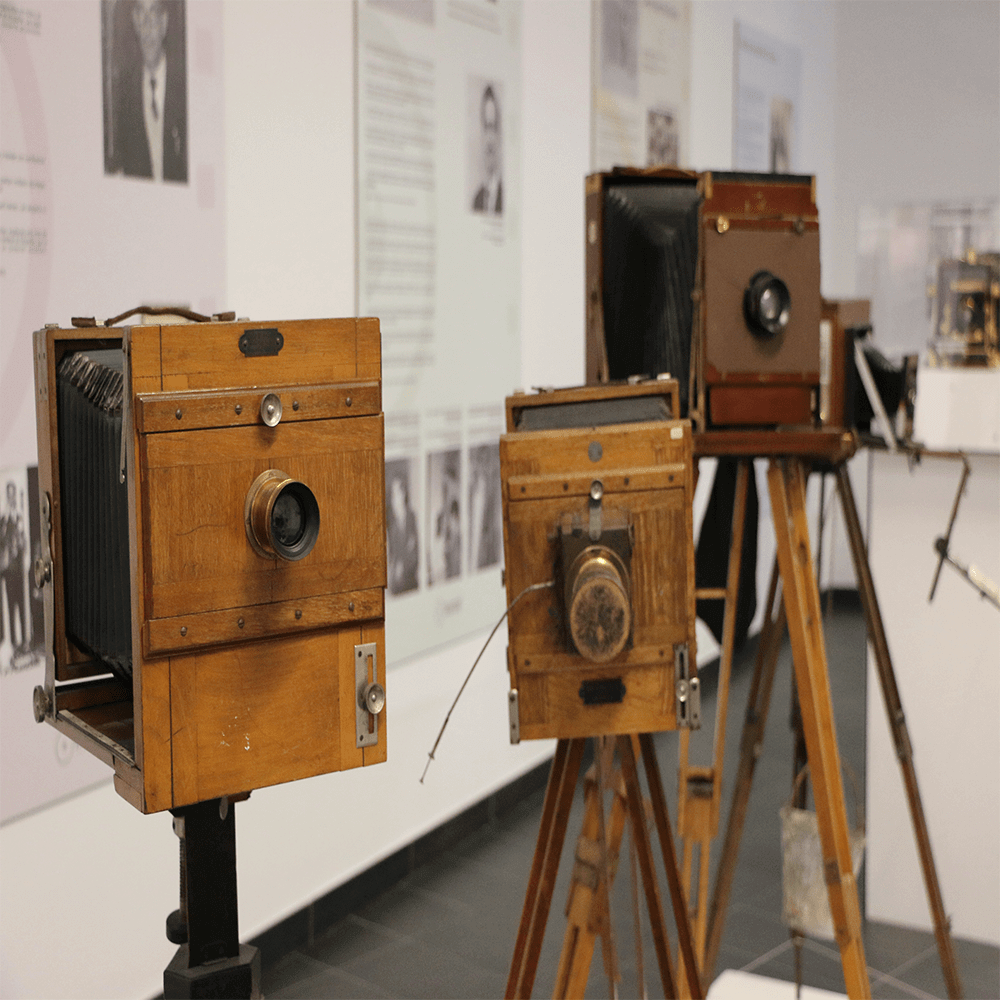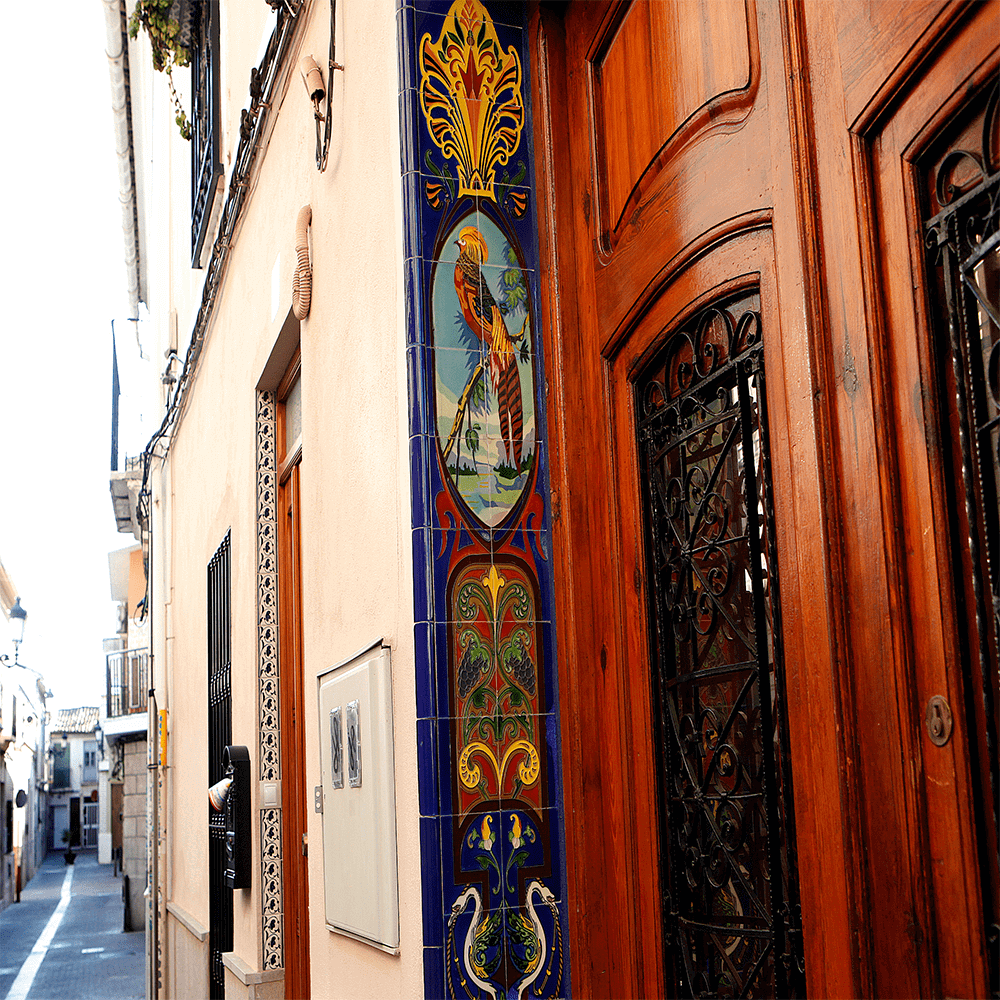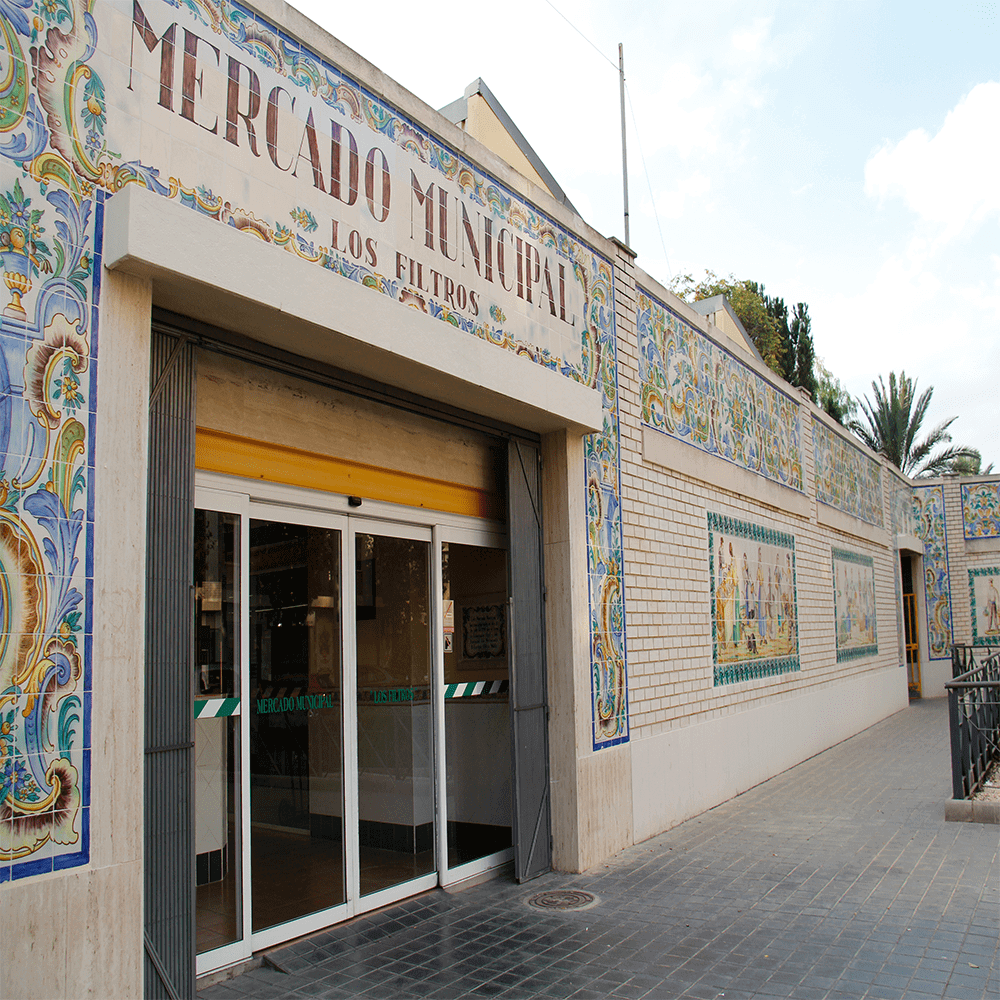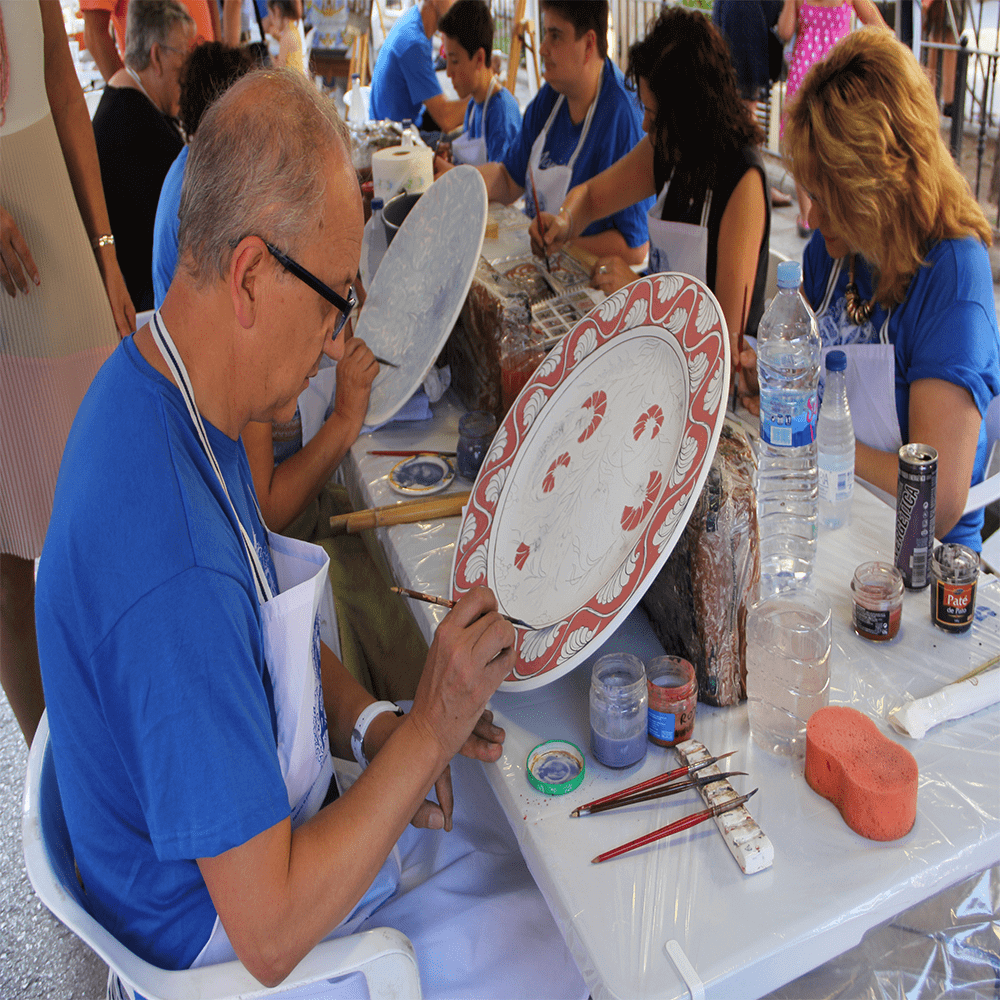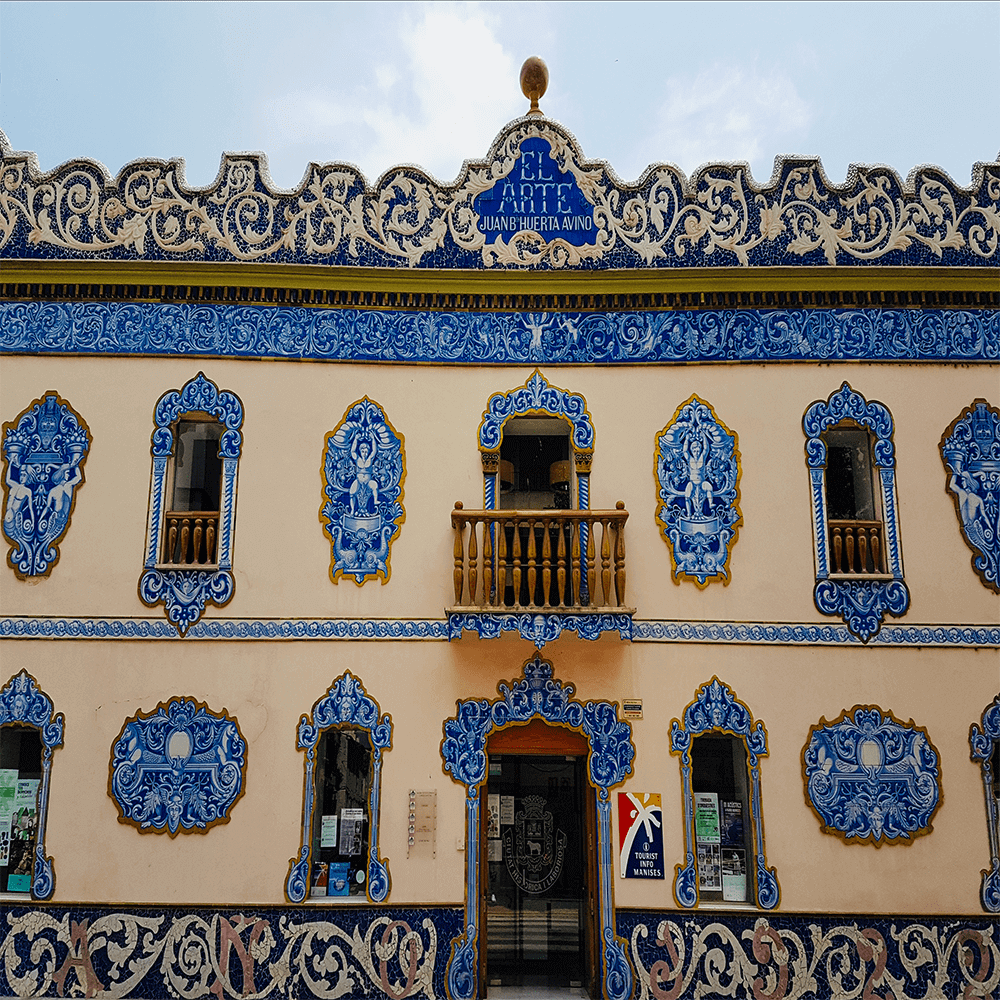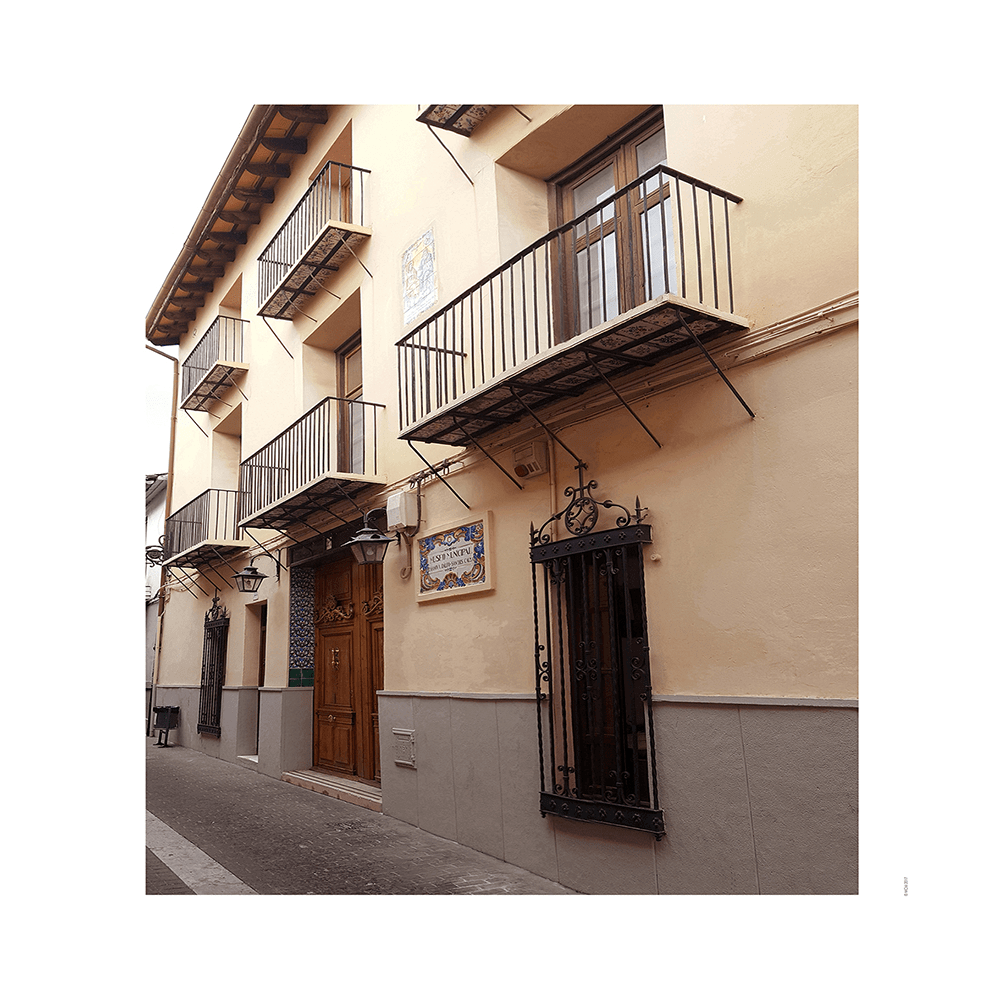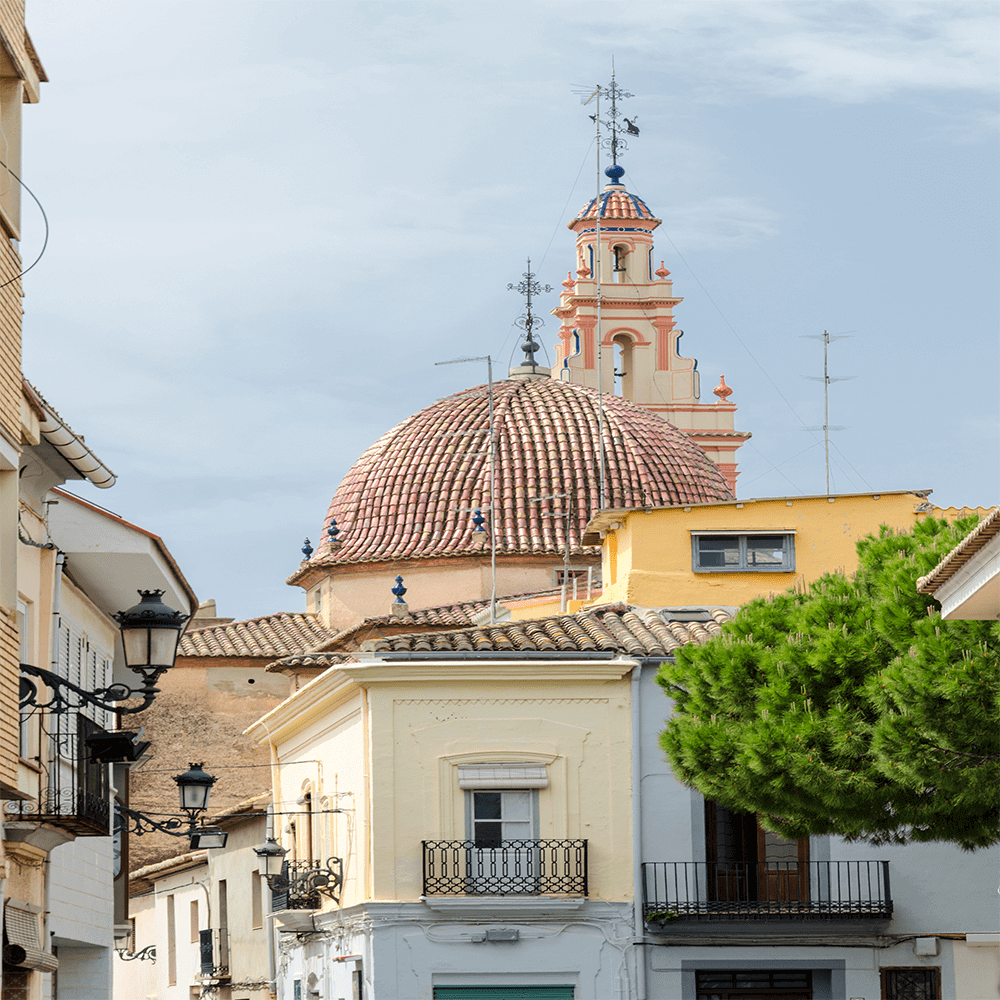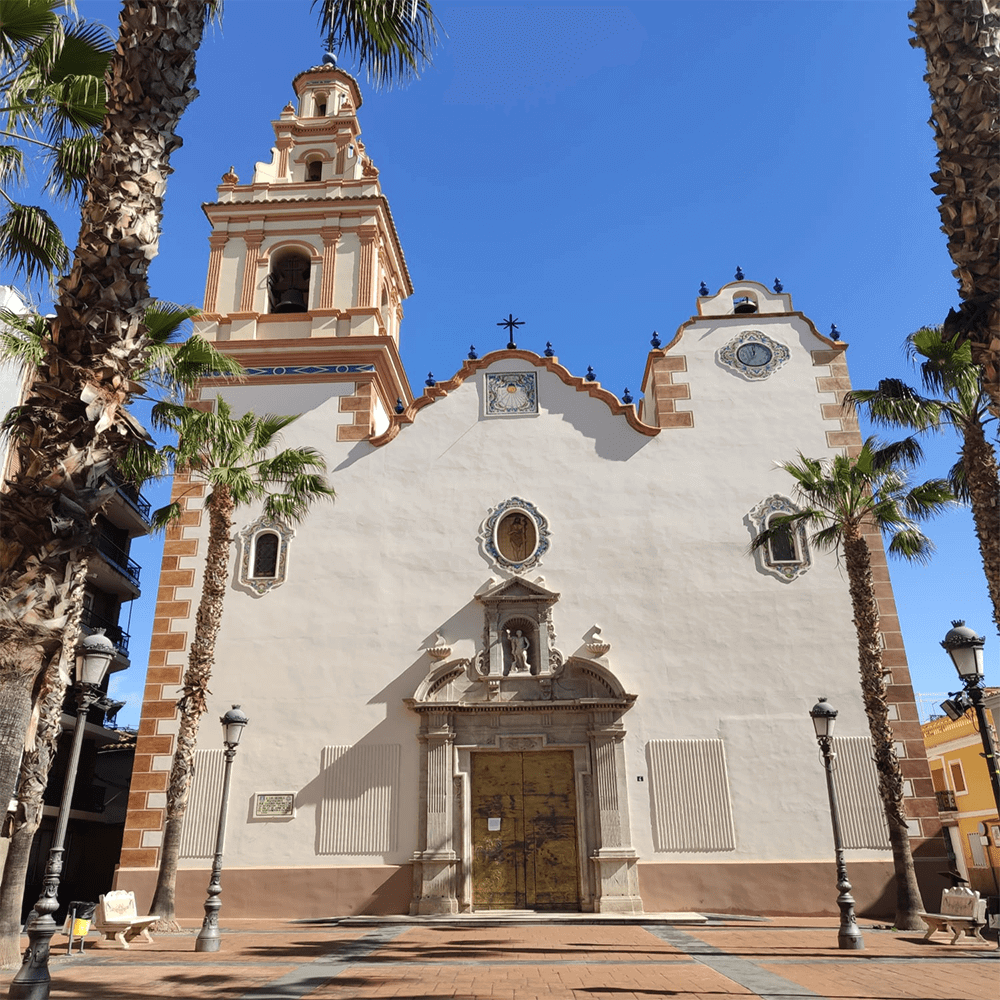Manises
Manises has a population of about 30,000 inhabitants. It is located within the metropolitan area of Valencia, just 7 km from the centre. The village stands out for its ceramics industry, which produces items in a multitude of styles and using many different new techniques, whilst simultaneously conserving it traditional processes.
The antiquity of Manises has been demonstrated by the discovery of Roman remains in “Partida del Racó” and “Masía la Cova”, such as lamps, weights, pieces of amphora, housing walls, pottery stamps, etc., and the existence of an aqueduct that still conserves over twenty arches. The aqueduct is undoubtedly Roman, although it usually attributed to the Arabs.
The origin of the village is Muslim, although there are remains from Roman times. The Muslims created a major ceramic centre that was donated by James I in 1237, following the conquest of the city, to the family of Artal de Luna, one of the trusted men who accompanied him during the Valencian campaign. However, on 3rd December, 1304, the manor was definitively incorporated into the possessions of the Boïl family, who maintained ownership until the abolition of manorialism in Spain.
The memory of this period figures in the Boil family crest, officially adopted by the Town Council as a representative emblem of the village. Between the 14th and 16th centuries, tiles with a metallic, reflective finish, together with those decorated with blue tones, brought Manises fame throughout Europe and were sought after by princes and popes, and praised by numerous testimonies of the time. From 17th to 19th centuries, this production of decorative and utilitarian objects, in a clear process of decline driven by changing tastes and fashions, was augmented with the introduction of polychrome tiles decorated with vivid and imaginative motifs, which in turn were used as decorative articles, symbolic items and building elements, and which gave new impetus to local production.
Manises’ ceramic industry employs a multitude of styles and techniques which include the latest technological advances, without forgetting the traditional ceramics processes that are testimony to the artisan culture that the village has preserved.
Gastronomy:
The most popular local dishes are based on rice (”arròs al forn” (baked rice), “fesols rodats” (beans, oils and garlic), “coca escudellà”, “fesolà” (beans with pork), which is prepared in many different ways: stews, dry, baked, etc. However, we must not overlook other dishes prepared in Manises, such as roasts, ham, cheeses and gazpacho. Manises is known for its traditional sweets and traditional pastries, as well as its typical desserts, such as “orelletes”, “coques fines”, “buñuelos” (fritters), “peladillas” (sugared almonds) and the drink “horchata”.
Places of interest:
Our starting point is the Manises railway station, the façade of which is decorated with painted tiles, in a style popular in the 18th century. Next to the station (Calle Garcia Lorca), we find the façade of the old Francisco Valldecabres factory, which was one of the most important in Manises during the first half of the 20th century.
Neogothic, the façade is inspired by the main entrance of “La Lonja” in Valencia. We then head to the nearby Paseo Guillermo de Osma. Here we can pause to contemplate the ceramic decoration of the buildings, and especially the elements used in the doorways. The former Ceramics School, remodelled by the architect Javier Goerlich in 1950, is located in the same street. In 1925, a large, relief plaque painted in blue with a golden, metallic reflective effect was installed in honour of Guillermo de Osma, who is represented in the piece.
From there we continue on to Avenida Blasco Ibañez, a modern avenue that has recently been remodelled, and in which we can find:
A monument erected in honour of Manises’ ceramics workers and José Gimeno Martínez, an exemplary Spanish artisan. It is the work of the Valencian sculptor Octavio Vicent;
A cross with ceramic inlays on the stone. The work of the ceramic artist Gimeno Martinez, it was originally erected on the Calvary before being transferred to its current location in 1973;
Ceramic monoliths bearing ceramic panels on the front and back. One side shows the ceramic-making process, and the other representations of the life and works of the writer Vicente Blasco Ibáñez. The mentioned monoliths were made by the craftsman Juan Columbus in the style of the 18th century.
We then continue in the direction of Calle de San Juan, where we can also find good examples of popular architecture with interesting ceramics applied to the architectural structure, mainly recognizable in the doorways of the houses. Continuing along C / San Juan, we come to the Church of Saint John the Baptist. The church was built during the first half of the 18th century. Its unique dome is covered with tiles with a reflective metallic finish. Neoclassical, its interior is spacious and proportioned, with a Latin cross layout and an 18th century Valencian ceramic skirting board, as well as many other 20th century ceramic elements in the side chapels. Mention may be made of the Via Crucis, adorned with ceramic tiles painted by Francisco Dasí (1834 – 1891). On leaving the church and at the end of Calle Mossen Pere Esplugues, on the corner with Calle Sagrario, is the Chapel of Saint Anthony. The chapel was originally remodelled in the 19th century, presumably taking advantage of the existing structure of a chapel pertaining to a 14th century church, and was remodelled again in 2002. It conserves its original gothic doors, with their fittings, and the baptismal font. The Manises Ceramics Museum is located in Calle Sagrario, 22. The museum is located in a former 18th century mansion owned by the Casanova Dalfó – Sanchis Causa family, which has been ceded to the town council. The museum displays a comprehensive collection of ceramics produced in Manises between the 14th and the 20th centuries, revealing the complex reality of the continued dedication of the people of Manises to the manufacture of ceramics for more than six hundred years. Together with the building, the Casanova Dalfó-Sanchis Causa legacy includes a number of works of art and pottery which formed the nucleus of the museum’s stock, which was subsequently augmented by donations from local residents, findings and excavations in the city’s subsoil. There is also a selection of pieces acquired in recent years as a means of filling gaps in the collections. These include a notable representation of ceramic pieces produced in Manises from 14th to the present century. There are more than 4,500 pieces in total. In addition to the permanent exhibition, the MCM houses a specialized ceramic library and a documentary archive of contemporary ceramics (created thanks to the collaboration of the authors), with over a thousand records relative to potters and two thousand five hundred photographs of their works, as well as brochures and exhibition catalogues, press clippings, etc. The Museum also has complementary facilities and services, such as storage space, a restoration workshop and library archive.
After visiting the museum, the route can be completed with a visit to Avenida País Valenciano, where we find:
- Façade of the Old Pottery Factory of Juan Bautista Huerta Aviñó (El Art), a ceramist who was a virtuoso in creating metallic-reflective finishes. When facing this building, Huerta employed the decorative possibilities offered by tiles, painted in cobalt blue on white, to lend a uniqueness to a façade that would otherwise go unnoticed. The main themes of the panels that alternate with canvases on the walls give meaning to an iconographic programme fill of references to trade, represented by Mercury and his attributes; productivity, present in the cornucopias filled with countless pieces of pottery, and good manufacturing, with the representation of the Alhambra vase, a paradigm at the time.
- “Los Filtros” Municipal Market, inaugurated in 1974, whose façade sports wonderful 18th century style ceramic panels representing the uses and customs of the markets of the period.
- “Parc dels Filtres”: -“Parc Ceràmic d’Història Valenciana” – consisting of 5873 m2 distributed between a landscaped area, three different games area, a recreational area and an area for the celebration of open-air concerts. A series of ceramic panels have been installed in the park, representing an authentic cultural encyclopaedia of the history of the Valencia Region. The panels are arranged in such a manner as to offer a chronological view of the local history, beginning in the Stone Age and concluding in the present century. The graphics of the classic comic Pumby have been used to draw the visitor into a universe that is rich in colour and which awakens curiosity. – “Els Filtres” Exhibition Hall, located in an underground building in the eastern extremity of the park. The building consists of two vaulted bodies that have been restored with the maximum respect for the original building. The building’s functionality has been ensured through the creation of two distinct spaces: a space for circulation and a space for exhibitions. Finally, it is possible to visit a pottery workshop and observe the ceramic-making process and to shop in the many “Ceramics Shop” mainly located in Calle Maestro Guillem, Avenida Blasco Ibáñez and Calle Ribarroja.
Other places of interest:
- Jardí El Boscany: a garden surrounding the Culture and Youth Centre, decorated with ceramic panels representative of traditional Valencian children’s games (2003)
- Gabriel Navarro Pradillos Park: located between the Calle Luis Armelles, Calle Lepanto and Calle Mayor, in which we can observe ceramic panels bearing the coats of arms of the different Spanish provincial capitals, as well as the coats of arms of Spain and the town of Manises.
- Plaza Rafael Atrad: a square decorated with ceramic murals representative of the flora and fauna of Valencia (2003).
- “El Carmen” Park: a playground decorated with ceramic murals depicting the history of the Manises railway, since its inception with steam locomotives.
- Plaza España: located next to what was one of the most emblematic factories in the municipality, it has been recently remodelled and is the site of a homage to water, incorporating the Manises’ most representative ceramic elements (2001).
- “Els Arcs” irrigation canal – an interesting aqueduct, the arches of which are covered with stalactites. It currently retains its arches in a primitive state. Although there are many who believe it to be of Muslim origin, certain historians believe it to be a Roman construction.
- “Barri d’Obradors”- The traditional ceramic “obradors” are located in this neighbourhood. It is composed of irregular streets and alleys located at different levels.
• Passeig de L’Horta – a natural circuit of almost 2 km in length, very close to the village and offering two choices: a walk along the covered irrigation canal clogged or walk along trails following the River Turia. It has ceramic interpretive panels showing the local flora and fauna.
